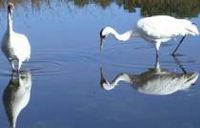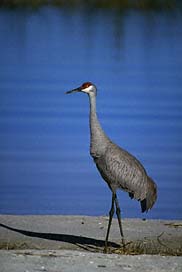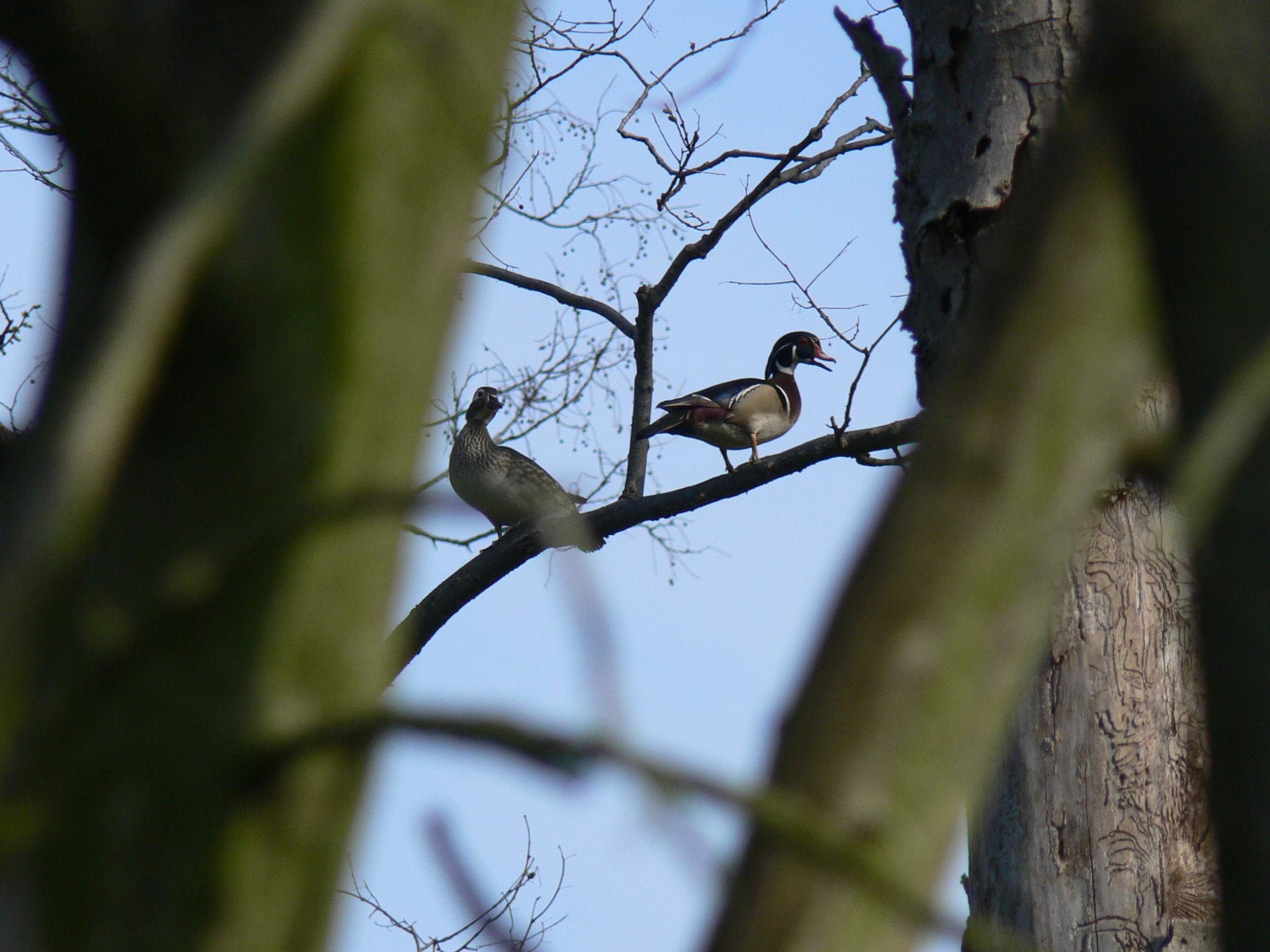The RHN Bird Group convened at Mike Turk’s place for a discussion of these two cranes. Below is a condensed version of the information presented at the meeting, by Martin Chen, Gene and Charlene Denzel, Harold and Muriel Farrant, Barbara Jackson, Theo Hofmann, and MIke Turk .


First on the table was the Sandhill Crane, which is one of the only two crane species in North America (of 13 worldwide). This bird comes in 6 sub-species or races, of which the local one (nesting as near as the Carden Alvar area) is the Grus Canadensis Tabida (Greater Sandhill Crane), somewhat larger (and with a 50% longer bill) than the ones which breed in the Arctic (including far Eastern Siberia) and sub-Arctic. All of these winter in the area from Southern California across the lower Southern US and North Central Mexico, and 75-80% of the migrating birds stage on the upper Platte River in Spring migration. The main differences amongst the populations is size, but even in mixed flocks (say at the famous gatherings on the Platte River) they are not always easy to distinguish. The Southern races (in Cuba, Florida, and Mississippi) are essentially sedentary .
The birds range in weight from roughly 3.3KG to 4.3 kg for females, and 3.8 kg to 5.4 kg for males, and up to 120cm in height. Wingspans range from 160 to 210 cm.
There are upwards of 500,000 in the total poppulation, more than the total of all other crane populations in the world. They seem to be spreading out as suitable habitats are er-established, and their primary threat in general is degradation of habitat which consists of open wetlands, shallow marshes and wet meadows, plus over-hunting in some areas. Historically they were hunted for food and sport, and sometimes by farmers because of their penchant for grains. (When large flocks of Sandhill Cranes descend on a freshly planted field, they can take so much seed that the field may need to be replanted! There is work going on to find an economical treatment for seeds which will discourage the birds from foraging to this destructive extent.)
They are omnivorous, but especially in Winter do like to visit farm fields for grains.
This species shares with all cranes the graceful, stately courtship dances, with the tossing of sticks, rocks, or tufts of grass included in the ballet. Anyone who has had the opportunity to witness one of these dances will attest to the magic. When flying they are easily distinguished from herons and egrets by the stretched out form, with straight neck and legs extending from the body, plus a distinctive slow rolling down-stroke and quick upstroke of the wings. Their calls (often heard in the evenings if canoeing in parts of Killarney Park in July, for instance) are quite noticeable and identifiable as well.
The Whooping Crane (Grus Americana) is the tallest bird in Norh America, ranging from 130-160 cm in ht (51-63 in), and 4.5-8.5 kg in wt. (9.9-18.7 lb), with a wingspan of 200-230 cm (78.7-90.5 in). To better appreciate its size, consider that it is 7 times heavier and 30 cm (a foot) taller than the Great Egret, and almost 3 times the weight of the Great Blue Heron, birds which are locally familiar. They also fly with extended neck and legs, as with the Sandhill Cranes, in diistnction from herons and egrets, and their long stratight bill is quite different from a stork’s.
As with the Sandhill Cranes, these birds are omnivorous, eating grains, fish (such as eel), crustaceans, berries, etc., perhaps more inclined to animal material. They also have a stately courtship dance, and similar foraging behaviour.
It’s population status is the complete opposite of the Sandhill Crane, in that its population declined to 15-16 birds in the wild in 1941! A concerted effort to protect and nurture this magnificent species has built them back up to 232 in the flock which breeds in Wood Buffalo National Park (in Alberta and the Northwest Territories) and winters in the Aransas National Wildlife Refuge in Texas, another 53 in an experimental non-migratory flock established near Kissimee Florida. A third population which has involved an attempt to establish a new flyway between a breeding ground in Wisconsin and wintering ground in Florida, with the birds being trained on the migration route by following an ultralight aircraft and had reached 82 birds as of January, suffered a devastating blow this month when 17 of the migrating first-year birds were killed in the huge storms in Florida. (For more about this, see the migration project. ) Besides these wild populations, there are some 145 in captivity. Clearly the species is still in a very precarious situation.
In addition to major habitat loss, the Whooping Crane suffers from potential nest and brood predation from bears, wolverines, wolves, lynx, and Ravens. Adults are only subject to the bobcat, being more likely to suffer from hitting power lines. Of course, as with all large birds, it is also subject to ‘accidental’ shooting.

 Gladys lived at the corner of Yonge Street and Major MacKenzie Drive until about 2 ye ars ago, but left after a long continuous battle with the Town and the Department of Highways who wanted to take over her property when the two roads were being widened.
Gladys lived at the corner of Yonge Street and Major MacKenzie Drive until about 2 ye ars ago, but left after a long continuous battle with the Town and the Department of Highways who wanted to take over her property when the two roads were being widened.
